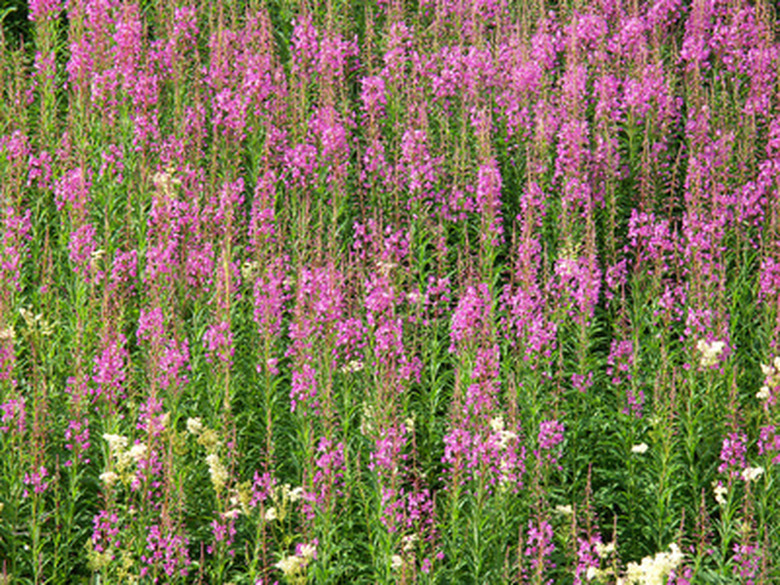Native Plants Of Alaska
Alaska may wear a deep mantle of snow much of the year, but when the state begins to thaw in May, its native plants put on a display dominated by purple, blue, white and yellow wildflowers. By July, many parts of the Last Frontier resemble an ephemeral garden of Eden, as berries ripen and the ubiquitous fireweed blooms. Even on the tundra outside Barrow, the most northerly city in the United States, hardy groundcover plants decorate drab gravel roadsides with their tiny flowers.
Fireweed
Most visitors to Alaska will encounter unforgettably vibrant stands of lavender fireweed, growing up to 8 feet tall along most of the road system in USDA hardiness zone 2A. Fireweed (Epilobium angustifolium) grows in open, disturbed land in much of the Northern hemisphere. Its edible shoots, leaves and flowers find their way into Alaska Native ice cream and even sled dog chow.
Alpine Forget-Me-Not
The state flower Alpine Forget-Me-Not (Myostis alpetris) blossoms in July. It features five sky-blue petals 1/4 to 1/3 of an inch around a white inner ring and a yellow center. This perennial wildflower grows 6 to 12 inches high in alpine meadows and is hardy to USDA Zone 3A.
- Alaska may wear a deep mantle of snow much of the year, but when the state begins to thaw in May, its native plants put on a display dominated by purple, blue, white and yellow wildflowers.
- Most visitors to Alaska will encounter unforgettably vibrant stands of lavender fireweed, growing up to 8 feet tall along most of the road system in USDA hardiness zone 2A.
- Fireweed (Epilobium angustifolium) grows in open, disturbed land in much of the Northern hemisphere.
Alaska Poppy
Hardy even in the brutal conditions of USDA Zone 1, the Alaska poppy (Papaver alaskanum) grows 6 to 12 inches high. The Arctic poppy subspecies (Papaver lapponicum) grows on the tundra above the Arctic Circle and features buttercup yellow flowers that follow the motion of the sun. Additional Arctic wildflowers include rock jasmine (Androsace chamaejasme) with five white petals around a yellow center, and yellow-flowered members of the family Saxifraga, including bog saxifrage, cushion saxifrage and yellow-spotted saxifrage.
Alaska Blueberry
This 6-foot-tall shrub provides berries beloved by Alaska bears and birds, and humans. It forms one of the major ingredients of akutaq or Eskimo ice cream. Alaska blueberry (Vaccinium alaskensis Howell) grows from Southeast Alaska to the Pacific Northwest. The berry scores high in tests of its antioxidant properties, according to scientists at the University of Alaska Fairbanks, intriguing scientists and entrepreneurs who want to bring the Alaskan blueberry to market.
- Hardy even in the brutal conditions of USDA Zone 1, the Alaska poppy (Papaver alaskanum) grows 6 to 12 inches high.
- The Arctic poppy subspecies (Papaver lapponicum) grows on the tundra above the Arctic Circle and features buttercup yellow flowers that follow the motion of the sun.
Alaska Cedar
Hardy to minus 40 degrees F, the Alaska cedar (Chamaecyparis nootkatensis) can grow to 20 to 30 feet and is an important timber species valued for its durable wood. It flourishes in cool, humid climates within 100 miles of the Pacific Ocean and grows in Alaska from Prince William Sound south. It grows in stands mixed with western hemlock, western red cedar and Sitka spruce.
